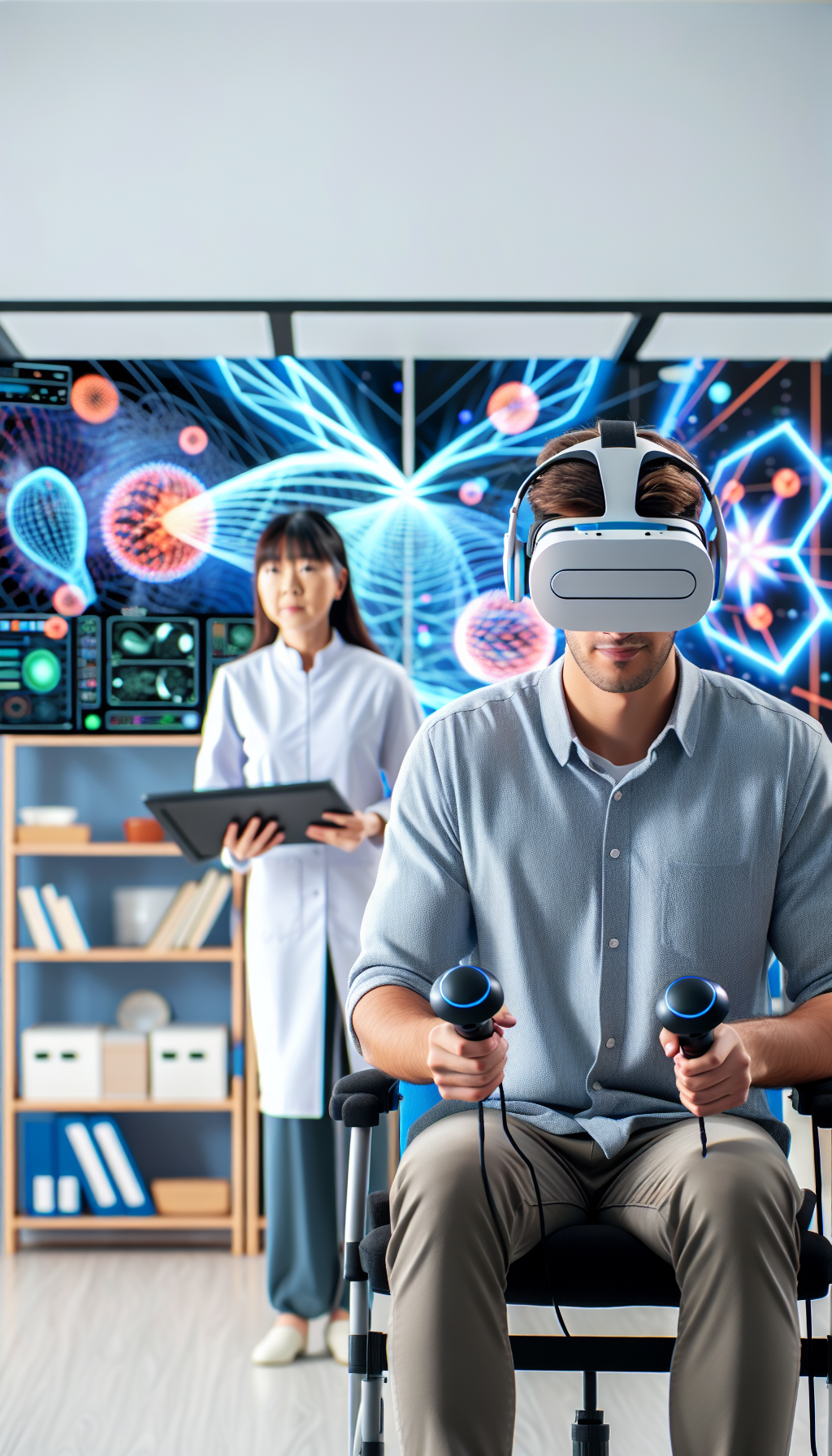Proprioceptive feedback is a critical aspect of the sensory system that informs us about our body’s position, motion, and equilibrium. It is an integral component of sensory health, which encompasses the seamless integration of stimuli from our environment and the body’s responses to it. Proprioception allows individuals to perform everyday activities without consciously thinking about the movements. This sophisticated system is particularly vital in the realm of physical therapy, where the rehabilitation of movement and the enhancement of motor function are paramount.
Understanding Proprioception
Proprioception, often referred to as the "sixth sense," involves sensory receptors in our muscles, tendons, and joints. These receptors are responsible for sending information to our brain about limb position and movement. This feedback enables us to gauge the force and timing required for complex activities. The absence or impairment of proprioceptive feedback can lead to difficulties in coordinating movements, maintaining balance, and can increase the risk of injury.
Physical therapy utilizes the principles of proprioception to help patients recover from injuries, surgeries, and other conditions that affect movement. Therapists design programs that stimulate proprioceptive input, thereby aiding in the restoration of normal function.
The Role of Proprioceptive Training in Rehabilitation
Proprioceptive training is a critical component of rehabilitation programs. It focuses on improving the patient’s awareness of joint position sense, which is essential for the safe execution of movements. Exercises may include balance activities, joint repositioning, and weight-bearing movements, all aimed at enhancing the body’s proprioceptive responses.
For instance, someone recovering from a knee injury might engage in exercises that challenge their ability to perceive the joint’s position without visual input. This training not only aids in the recovery process but also helps prevent future injuries by improving joint stability and neuromuscular control.
Proprioceptive Techniques in Physical Therapy
Physical therapists employ various techniques to improve proprioception, including:
- Balance Exercises: These can range from simple tasks like standing on one leg to more complex activities involving balance boards or stability balls.
- Closed Kinetic Chain Activities: Exercises where the foot or hand is in a fixed position, allowing patients to work on joint position sense in a controlled environment.
- Neuromuscular Facilitation: Techniques that involve resistance and proprioceptive cues to enhance muscular response and coordination.
These techniques are not only beneficial for athletes or individuals recovering from injuries but are also critical for elderly populations who may be at a higher risk of falls due to diminished proprioceptive acuity.
Integration with Other Sensory Inputs
Proprioception does not function in isolation. It works in concert with other sensory inputs, such as visual and vestibular systems, to form a cohesive picture of the body in space. Physical therapists often design exercises that integrate multiple sensory systems to improve overall function and coordination. For example, a balance exercise might be performed with eyes closed to heighten proprioceptive input while reducing reliance on visual cues.
Proprioceptive Feedback’s Impact on Various Health Domains
The significance of proprioceptive feedback extends to various health domains, including Brain Health, as it is closely linked to the neurological pathways that process sensory information. Moreover, proprioceptive training can have a profound impact on areas such as Fitness by enhancing an individual’s ability to perform exercises with proper form and reduced risk of injury.
Applying Proprioceptive Principles Beyond Physical Therapy
The principles of proprioception can be beneficial in various aspects of daily life. For instance, ergonomic assessments often consider proprioceptive feedback to design workstations that reduce strain and improve posture. Additionally, proprioceptive cues are employed in activities such as yoga and Pilates to increase body awareness and mindfulness.
Proprioceptive Dysfunction and Its Implications
When proprioception is compromised, it can lead to proprioceptive dysfunction, a condition where the body has difficulty processing and responding to proprioceptive input. This can manifest as clumsiness, poor coordination, or difficulty with motor tasks. Physical therapy plays a crucial role in addressing these issues through targeted exercises that enhance proprioceptive sensitivity and improve motor function.
Enhancing Proprioception for Athletes
Athletes can particularly benefit from proprioceptive training to fine-tune their motor skills and achieve peak performance. Exercises that simulate sports-specific movements can help in the development of neuromuscular patterns that are critical during competition. Resources such as How Sensory Integration Affects Athletic Performance provide additional insights into the role of sensory integration in sports.
Advanced Proprioceptive Modalities
With advancements in technology, new modalities such as virtual reality and biofeedback are being integrated into proprioceptive training. These tools offer immersive environments and real-time feedback that can accelerate the rehabilitation process and make it more engaging.
External Resources for Further Exploration
For those looking to delve deeper into proprioceptive training and its applications, several niche resources are available:
- Sensory Processing and Its Impact on Motor Skills Development offers a comprehensive look at how sensory processing affects motor skill acquisition and refinement.
- The American Physical Therapy Association (APTA) provides guidelines and best practices for incorporating proprioceptive techniques into therapy.
- Journals such as Journal of NeuroEngineering and Rehabilitation explore the intersection of technology and rehabilitation, presenting cutting-edge research on proprioceptive modalities.
Conclusion
Proprioceptive feedback is an indispensable element of physical therapy and overall sensory health. By understanding and enhancing this feedback, therapists can aid in the recovery and improvement of patients’ motor functions, reduce the risk of injury, and contribute to a better quality of life. As research continues to evolve, proprioceptive training will undoubtedly become even more personalized and effective, offering new hope and improved outcomes for those it serves.



